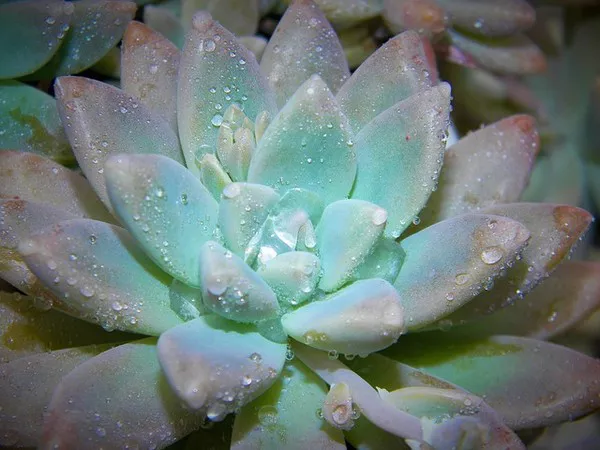Succulents have gained popularity as low-maintenance plants that add a touch of greenery to indoor and outdoor spaces. Their unique ability to store water in their leaves, stems, or roots allows them to thrive in arid conditions, making them a favorite among busy gardeners and plant enthusiasts alike. However, achieving the best growth for succulents requires more than just neglecting them. Understanding their specific needs and providing the right conditions is essential for their health and vitality.
1. Light
One of the most critical factors influencing succulent growth is light. Succulents are native to arid regions with plenty of sunlight, so replicating these conditions is key to their well-being. Place your succulents in a location where they can receive ample sunlight, preferably in direct sunlight for at least six hours a day. South or west-facing windows are ideal for indoor succulents, while outdoor succulents thrive in full sun.
However, it’s essential to be mindful of intense midday sun, especially in hot climates, as it can scorch the leaves of some succulent species. In such cases, providing filtered sunlight or partial shade during the hottest part of the day can prevent sunburn and promote healthier growth.
2. Watering
Contrary to popular belief, succulents do need water to thrive, although they are adapted to survive periods of drought. The key to watering succulents effectively is to mimic the natural rainfall patterns of their native habitats. Allow the soil to dry out completely between waterings, and then water thoroughly until the excess water drains out of the bottom of the pot.
Overwatering is one of the most common mistakes made by succulent enthusiasts and can lead to root rot and other issues. It’s essential to use well-draining soil and pots with drainage holes to prevent water from accumulating around the roots. During the dormant winter months or in cooler climates, reduce watering frequency to prevent waterlogged soil.
3. Soil
Succulents prefer sandy, well-draining soil that allows water to pass through quickly, mimicking the gritty texture of their native habitats. Commercial cactus or succulent potting mixes are readily available and are formulated to meet the specific needs of these plants. Alternatively, you can create your own succulent soil mix by combining equal parts of regular potting soil, perlite, and coarse sand.
Avoid using heavy, moisture-retentive soils, such as those designed for tropical plants, as they can lead to root rot in succulents. Additionally, incorporating organic matter, such as compost or peat moss, should be done sparingly, as it can retain moisture and increase the risk of overwatering.
4. Temperature
Succulents are well adapted to a wide range of temperatures, but most species prefer warm conditions similar to their native habitats. Ideal temperatures for succulent growth typically range between 60°F and 80°F (15°C to 27°C). However, many succulents can tolerate temperatures outside this range, provided they are given adequate protection from extreme heat or cold.
In colder climates, it’s essential to protect succulents from freezing temperatures, as prolonged exposure can damage or kill them. Consider bringing potted succulents indoors during the winter months or providing them with frost protection, such as frost cloths or row covers, if left outdoors.
5. Humidity
Succulents are well adapted to low humidity environments and can tolerate dry air better than many other types of plants. However, excessively high humidity can increase the risk of fungal diseases and rot in succulents, especially those with fleshy leaves or stems. To prevent these issues, ensure adequate air circulation around your succulents and avoid overcrowding them.
Indoor succulents may benefit from the use of a dehumidifier, especially during the humid summer months, to maintain optimal humidity levels. Additionally, avoiding overhead watering and watering in the morning can help prevent moisture from lingering on the leaves and promote faster drying.
6. Fertilization
While succulents are relatively low-maintenance plants, they still require occasional fertilization to support healthy growth. However, they are not heavy feeders like many other plants and can be easily over-fertilized, leading to fertilizer burn or other problems. A balanced, water-soluble fertilizer diluted to half strength is typically sufficient for most succulents.
Fertilize your succulents sparingly during the growing season, typically from spring to early fall, when they are actively growing. Avoid fertilizing during the dormant winter months, as succulents require less nutrients during this time. Additionally, always water your succulents before fertilizing to prevent root damage from the concentrated fertilizer solution.
7. Propagation
Propagating succulents is a rewarding way to expand your collection and share your love of these unique plants with others. Most succulents can be easily propagated from leaf or stem cuttings, making them an excellent choice for beginner gardeners. To propagate succulents successfully, select healthy, mature leaves or stems and allow them to callus over for a few days to prevent rotting.
Once calloused, place the cuttings in a well-draining soil mix and water lightly. Keep the soil evenly moist until new roots and growth emerge, then gradually transition them to the same care routine as mature plants. With proper care, succulent cuttings can quickly establish roots and grow into new plants, providing endless opportunities for experimentation and creativity.
Conclusion
In conclusion, succulents are fascinating plants that can thrive in a variety of environments when provided with the proper care and conditions. By understanding their specific needs for light, water, soil, temperature, humidity, fertilization, and propagation, you can ensure the health and vitality of your succulent collection. Whether you’re a seasoned succulent enthusiast or just starting out, incorporating these tips into your care routine will help you grow happy, healthy succulents that will bring joy for years to come.


